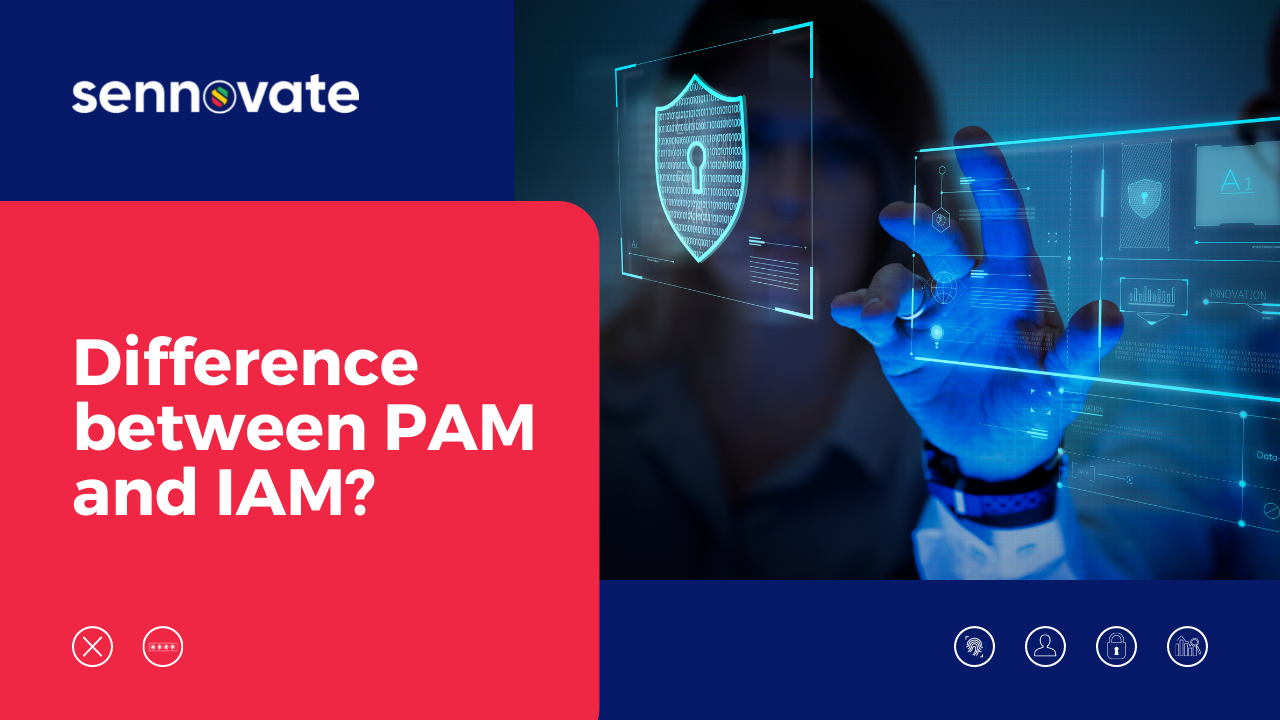

What is The Difference Between PAM And IAM?
Within the last two decades, the identity security landscape has transformed considerably for good reason. Companies are facing threats every day from virtually everywhere which make it essential to mitigate identity-related access risks.
To identify these risks, and has put Identity and Access Management (IAM), and Privileged Access Management (PAM) in the forefront of identity programs within companies today it is necessary to focus on supervising the access of people, digital identities, and privileged accounts.
But what really IAM is? What PAM means? What is the difference between security tools PAM and IAM? Which you can opt for?
Ahh! Too many questions and confusion right? No worries! We are here to solve your confusion. In this blog we will explain what is IAM and PAM and its difference.
Let’s proceed!
What is Identity Access Management (IAM) ?
Identity and Access Management is the important part of the entire IT security that manages digital identities and user access to systems, resources, and data across the company. IAM is the security management system. Being a security management tool it lower down the identity-related access risks within a business.
Nowadays, for both on-premises and cloud implementation leading IAM solutions are available.
To diminish risks, upgrade compliance, and better up the efficiencies across the enterprise, you need to choose the best IAM security partner for your organization.
What is Privileged Access Management (PAM) ?
Privileged Access Management (PAM) is a subtype of IAM that focuses mainly on protecting privileged accounts specially accounts granted to a few users who need access to backend databases, systems, and other places where highly-sensitive information is stored.
Privileged Access Management (PAM) is an extensive cybersecurity strategy that is encompassing people, and technology to control, monitor, secure, and audit all human and non-human privileged identities and activities.
In this competitive and digital world, enterprises are stepping ahead in implementing privileged access management (PAM) to protect against the attacks or threats caused by theft and privilege misuse.
What is the Difference Between PAM And IAM ?
Different Users
The users or audience of both IAM and PAM are different instead of they are critical areas of cyber security delivering protection. IAM focuses on managing general users through customers, controlling the access and experience that those users are granted within an application. Adversely, PAM delivers for administrative and privileged users by defining and controlling the administrative role of admin users.
Different scope and risk
The users of both IAM and PAM enter applications through different doors. For example, the users of IAM enter through the ‘front door’ and the users of PAM enters through the ‘back door’. Because of this, there is a difference in attack surface.
The ‘front door’ which is IAM has a low attack surface and can disclose a lot about individual customers, but does not provide the opportunity to download the entire database. On the other hand, the ‘back door’ which is PAM allows the mass download of databases as well as subtle changes in the takings, or log files, stock levels, etc.
Which one should you use?
Both IAM and PAM are useful to protect your organization from security theft. To fully protect your organization or business from internal and external theft, you must deploy both IAM and PAM solutions. By using IAM and PAM tools together, companies are able to eliminate any unprotected coverage gaps from hackers with a complete security solution that regulates password use, monitors user access activity, and facilitates government regulation compliance.
Companies must ensure that they closely integrate their IAM and PAM tools, this will help them to avoid redundant processes for privileged and everyday user accounts. With the strong combination of PAM and IAM, companies can anchorage automated provisioning and provisioning. Along with faster reporting and auditing across all of their audience accounts.
Along with this, it also does an integrated solution that offer complete user identity protection. It also helps save lots of time and intricacy of managing all user accounts across the organization.
Key Takeaways
Cutting the crap, Identity Access Management (IAM) and Privileged Access Management (PAM) are way different from each other either in terms of working as well as audience. According to the above-mentioned contents and differences, it is always advisable from our side that PAM solution should always be primarily implemented, followed by a complementary IAM solution.
At Sennovate, we offer both the tools i.e. Identity Access Management (IAM) and Privileged Access Management (PAM). Having any doubts or want to know more about IAM and PAM? Contact us right now by clicking here. Sennovate’s Experts will explain you both the terms in details and advise you the best security tool according to your organization’s needs and requirements. You can also write a mail to us at [email protected] or call us on (925) 918-6618.
Have any doubts or want to have a call with us to know more about IAM and PAM?
Contact us right now by clicking here Sennovate’s IAM and PAM Experts will explain everything
on call in detail.
You can also write a mail to us at [email protected] or call us on +1 (925) 918-6618.
About Sennovate
Sennovate delivers custom identity and access management solutions to businesses around the world. With global partners and a library of 1000+ integrations, we implement world-class cybersecurity solutions that save your company time and money. We offer a seamless experience with integration across all cloud applications, and a single price for product, implementation, and support. Have questions? The consultation is always free. Email [email protected] or call us at: +1 (925) 918-6618.



